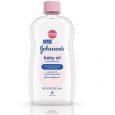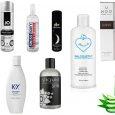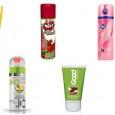Sex is such an important factor in our lives. We use it for general pleasure and for creating families. But here we won’t talk about the families part.
Let’s discuss the prevention of pregnancy, and prevention of contracting a disease from a sexual partner that maybe you are just having fun with, or one with whom, right now, you aren’t trying to have a child with.
That’s when condoms come into play. And knowing what type of condoms and lubes work together can help enhance the experience in the long run.
Picking out the Right Condoms
Choosing the right condoms is important considering there are so many options. While many have complaints about them not feeling good, or fitting well, there are a plethora of options if you do a bit of research and go on a site like Amazon and just try some out.
Get a sample pack. They even have ones that cater to those who have a latex allergy, so there really is no excuse.
Once you find one that fits and is comfortable for both yourself and your partner, lube can be introduced into the mix to make it more fun, make it wetter and prevent everything from drying out.
Why We Need Lube
Because sometimes our bodies just don’t make enough fluids to keep it wet enough down there.
But know that the amount of lubrication a woman produces and what is comfortable is different for every person and for every couple as well.
Some of the reasons a woman can experience decreased lubrication are lack of arousal, while a woman is breastfeeding, medications (allergy medications, birth control, chemotherapy, etc) and also from being dehydrated.[1]
The benefits of lube are numerous including decreased pain in either the vagina or the anus (whichever you prefer), enhancing arousal, and keeping the skin of the vagina soft (making it easier to stretch).[2]
Everything to Know About Silicone Lubes and Condoms
Silicone lubricants are one of the well-known and the longest lasting when used during sex and are generally hypoallergenic,[3] which is a good thing for those with sensitive skin.
They are also waterproof and great for the times in the shower, which is ideal because it’s a great place to get it on. They are also safe to use with latex condoms and will not break them down.
Another great advantage of them is that they don’t evaporate like saliva or water-based lubes, which means that those long sessions will get interrupted less and this makes them really good for anal sex as well.[4]
When it comes to waterproof lubricants, it’s already been stated that silicone lubes are the ones to have. Even though you are in the shower, your skin is still getting dried out, and latex condoms work the same way.
In order to prevent tears in the condoms or your body, using silicone lube with your condoms in the shower is going to be ideal.
Cleanup of silicone based lubricants can be a daunting task as it needs to be washed off with soap and water and cannot be used with silicone sex toys (but that’s a topic for a different day).
A Few Additional Side Notes
Now that you know the benefits of silicone lube, let’s just do a quick rundown of some of the cons.
While they are generally really useful to have in the bedroom, shower, or wherever it is that you are having sex, there are some things that you might want to be prepared for beforehand.
Be careful where you get the lube. If you love your sheets, put something over them because if you get this on your sheets, you will not get rid of it that easy.
Because they aren’t water soluble[7], it could create a permanent mess. Another is that they are more expensive than water based, but they will last longer[5] and provide more pleasure, so the initial cost will benefit down the road.
So now that you have the basics about silicone based lubes and condoms, go have some fun.
Try out different combinations of the two to figure out which one works best for you are your partner. Trial and error is a great way to get close and enjoy some more intimate time.
References:
- Our Bodies Ourselves. How To Choose a Lubricant for Pleasure and Safety. [ link ]
- See Above #1
- See Above #1
- Berkeley Wellness. How to Choose a Personal Lubricant: Pros and Cons of Water-Based, Oil-Based, and Silicone-Based Lubricants. [ link ]
- Corey Silverberg via Live About. What You Need to Know About Silicone Based Lubricants. [ link ]
- See Above #6
Image: Openclipart






Do not use lubricant inside a Condom:
I would not advise putting a drop of lubricant inside the tip of a condom.
This introduces the risk that during intercourse, the lubricant can work it’s way up and around the inside of the condom, thereby making it easier to slip off.
Also, it probably does nothing to increase overall pleasure, since the idea of a well fit condom is to more closely mimic the sensation of skin to skin contact. The lubricant inside the condom conteracts this. Best to stick to using the lubricant on the outside of the condom only, and most importantly stay safe with best practice condom use.
thank you for that tip!